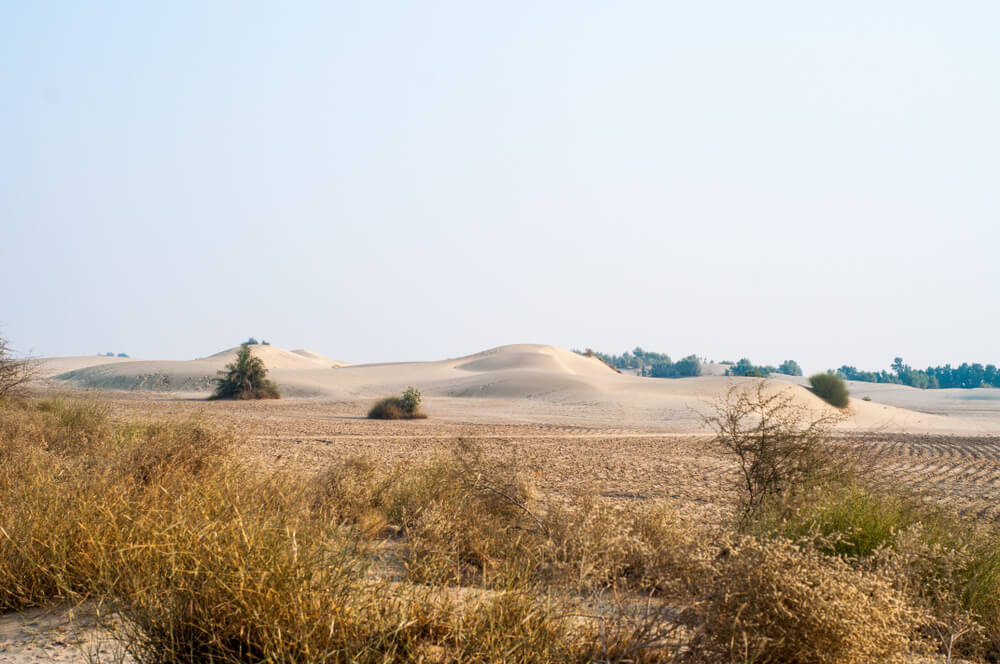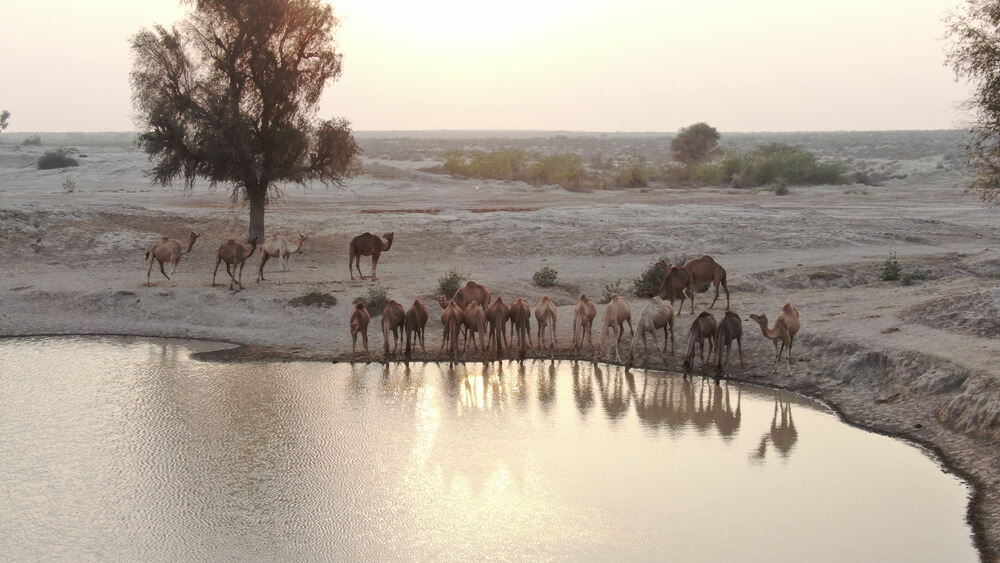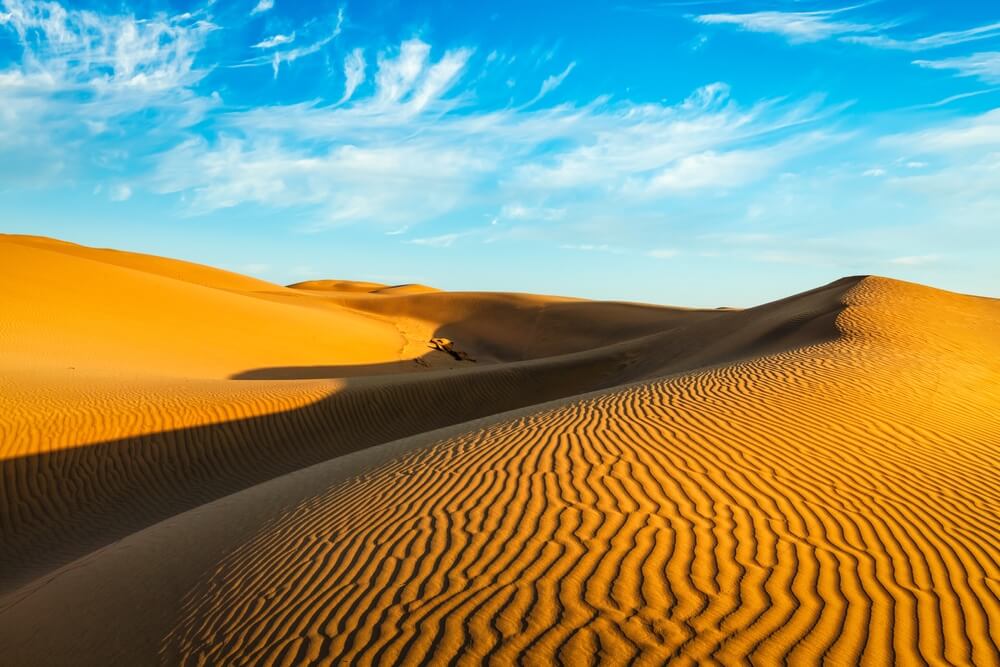Deserts of Pakistan
Deserts are vast areas that receive no or low rainfall, have poor nutritional soil, and have little vegetation. About one-third of the world falls under deserts, considered wastelands of the earth’s surface. The land has a diverse range of topography ranging from lush green and snow-covered mountains in the north to plains and deserts in the eastern and western parts. The deserts of Pakistan are magnificent and hold historical significance. They incorporate rich cultures and customs that are hundreds of years old. The explorers who travel through the deserts of Pakistan are left mesmerized by how sandy landscapes can be so breathtaking.
Are Deserts of Pakistan Important?
The deserts may look like broad areas covered in sand and rocks, but they carry immense cultural importance and biodiversity. They help humans and the environment in surprising ways.
Out of 15 minerals on our planet, 13 are found in deserts, giving it economic importance locally and globally. The arid deserts help in the formation of essential minerals like gypsum, borates, nitrates, and other varieties of salts. They form when the water evaporates, and the residue is rich in mineral compounds. Over 50% of the world’s copper reserves are in desert regions. Other valuable minerals like bauxite, gold, and diamonds are also found in deserts.
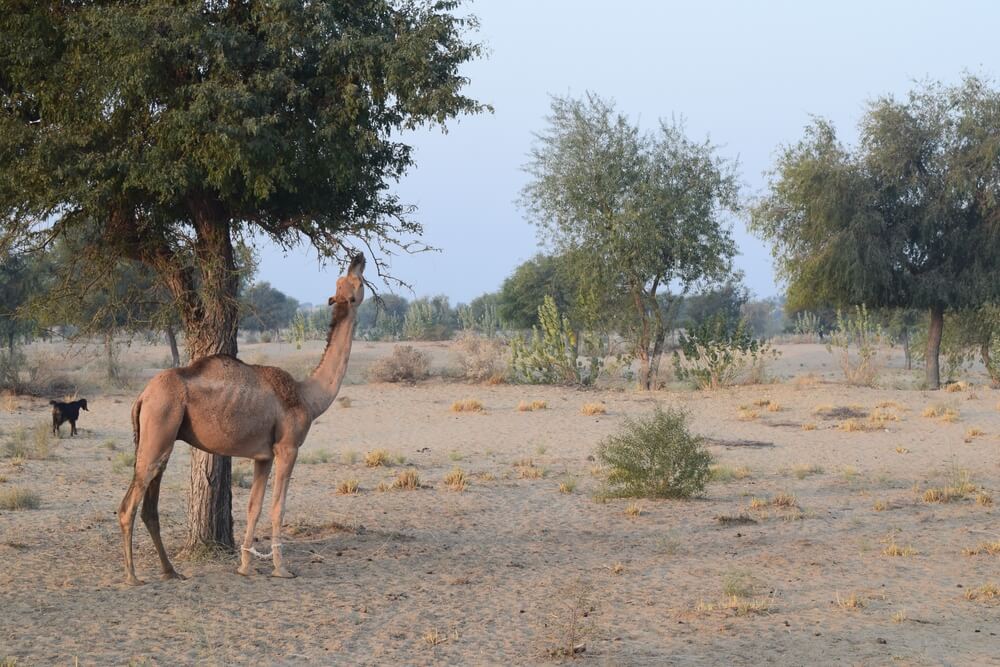
Desert animals are specially adapted to live in dry and hot climates. Humans benefit greatly from these animals, like camels, and they have formed a reliable herd of animals for nomads for thousands of years.
The specially adapted plants found there have particular medicinal purposes which other plants cannot fulfill. Dates are an essential source of energy grown only in desert areas.
The arid climatic conditions are perfect for preserving human artifacts and remains like mummies found in Egypt. These archaeological sites are essential in telling today’s world about ancient civilizations and the formation of societies that lived thousands of years ago.
Recent searches have found that desert sand helps to avoid the absorption of extra carbon dioxide on earth, which is a significant cause of global warming.
How Does Population Affect the Growth of Deserts in Pakistan?
Population growth is directly related to the development of the population. The expansion of deserts endangers 35% of the world’s land and people, but stopping expansion is almost impossible.
As the population grows, more resources are required to provide the necessities of living. More land is needed to make houses, grow food, keep cattle or make factories to give employment opportunities and cover the needs of life.
Desertification is taking place as more and more areas of land are cleared to meet these demands. Trees are removed for fuel, which dries the roots, and the soil becomes loose, resulting in erosion.
To feed more people, more cattle farms are built. To provide for the increasing number of cattle, the animals graze on the grass, which leaves the soil bare, which was once pressed tightly, preventing the land from drying out and cracking. Soon the land is no longer suitable for cultivation.
The growing number of people demands more resources from the earth. The ground is dug up to extract mineral resources destroying the landscape and affecting the climate.
How Can We Protect the Deserts of Pakistan?
The importance of desertification is making environmentalists determine how to take care of deserts and avoid desertification. The most common idea is to grow forests again. Afforestation projects are carried out all around the world. Seeds are planted carefully, and water systems are set up to encourage the growth of the trees. Another way to protect deserts is to control the water management systems to ensure water use and stop waste. Such steps are also taken to preserve the Sahara desert.
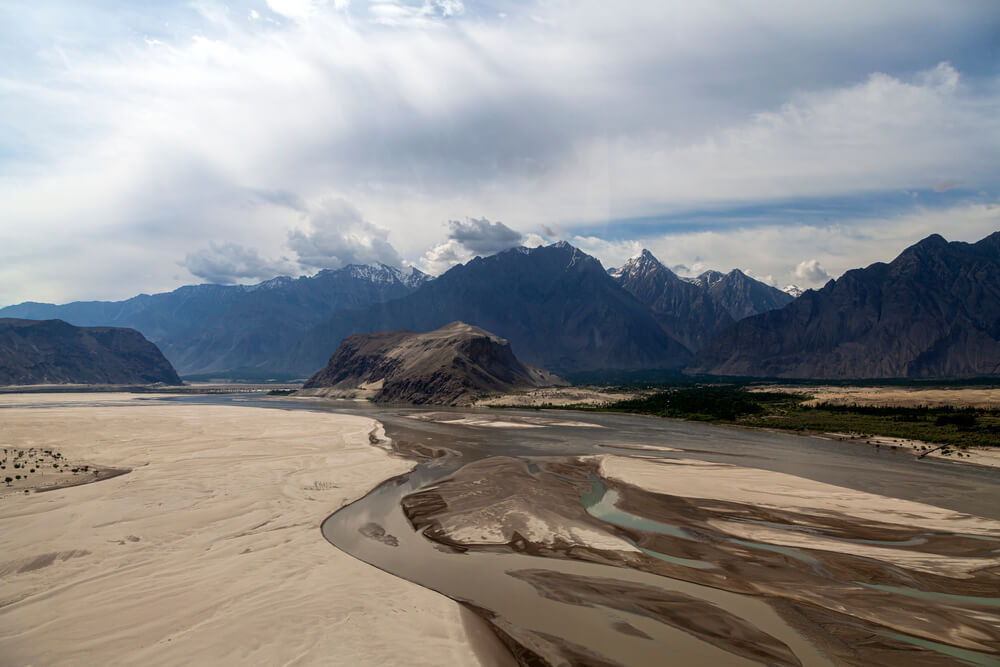
The wildlife of the deserts is protected by flanking the grasslands with different landscapes needed for the endangered flora and fauna to thrive.
Deserts of Pakistan Tourism Activities
The striking sands of the desert invite people to admire its beauty. Several activities can also take place in such a lonely place. Tourism in the desert is taking on new trends, and despite the scorching heat, people seem to enjoy it.
Camping in the desert can be a lot of fun. People enjoy singing and dancing during the daytime, riding on camel’s back, exploring the dunes, and later watching one of the most unusual sunsets. The temperature drops as the night sets, and it feels like a winter night. The sky of the desert shows marvelous views, and it is a perfect time to try finding Milky Way.
Other activities in the desert include desert safari and hiking in the desert. People also enjoy hot air balloon tours or helicopter rides to get a fantastic view from the top.
Famous Deserts of Pakistan
There are five most known deserts in Pakistan. Thar desert is a coastal desert, Cholistan and Thal deserts are classified as hot deserts, Kharan is a sandy desert, and Katpana is a Cold desert. The deserts in Pakistan were forests in the past. They vary in landscape and form; some have strong ties to the past.
Kharan Desert
The Kharan desert is a vast one in the Balochistan province of Pakistan. This mountainous and sandy region is also famous worldwide because it was a site that served as Pakistan’s second nuclear test carried out in 1998. This desert has a dry climate. Due to very little rainfall, the environment remains arid throughout the year. The residents of the desert mainly depend upon agriculture, livestock, and farming. The sandy and mountainous terrain usually stretch out with grey-brown sand.
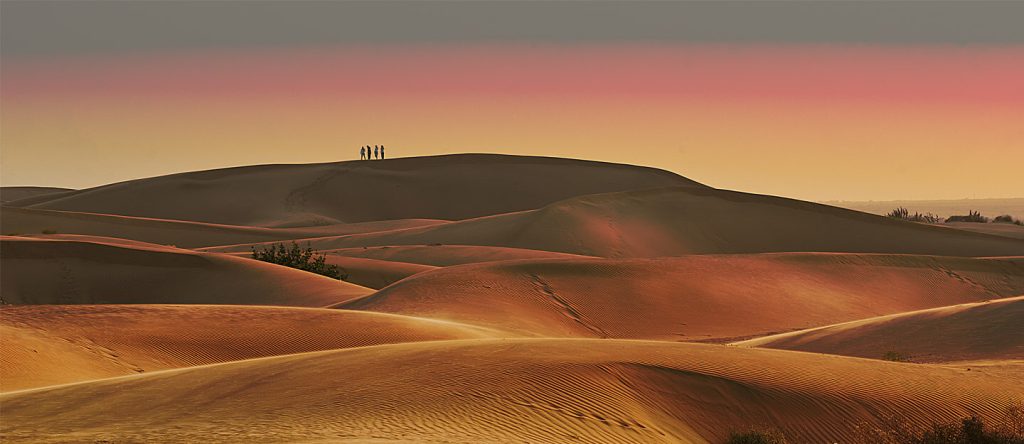
The desert also holds a fascinating historical background. It is believed that Alexander the Great also crossed this desert. He entered this desert in the 4th century BC after passing the historic Khyber pass when he defeated king Porus. Unlike other reasons of Balochistan, which is characterized by arid and harsh climatic conditions, the desert differs from the rest of the dry landscape due to its even terrain and sandy nature. The desert is situated in the Kharan district and covers an area of 20000 km square and a population of 0.23 million. The desert extends to the Iranian border on the west, surrounded by spectacularly beautiful hills in the east-west and north.
Thar Desert
One of the largest deserts of Pakistan is the Thar desert, also called the great Indian desert. It lies in the North Western subcontinent with an area of 77000 square miles. This region is the 20th largest desert in the world and the 9th largest subtropical desert. Thar desert is split between the territories of India and Pakistan, with 15% area in Pakistan and 85% in India. It covers an area of 12000 square miles in Pakistan, and the remaining 66000 square miles lie in India. The desert extends into Rajasthan, Haryana, Punjab, and Gujarat in India and the province of Sindh in Pakistan. Within Punjab, the desert continues as the cholistan desert.
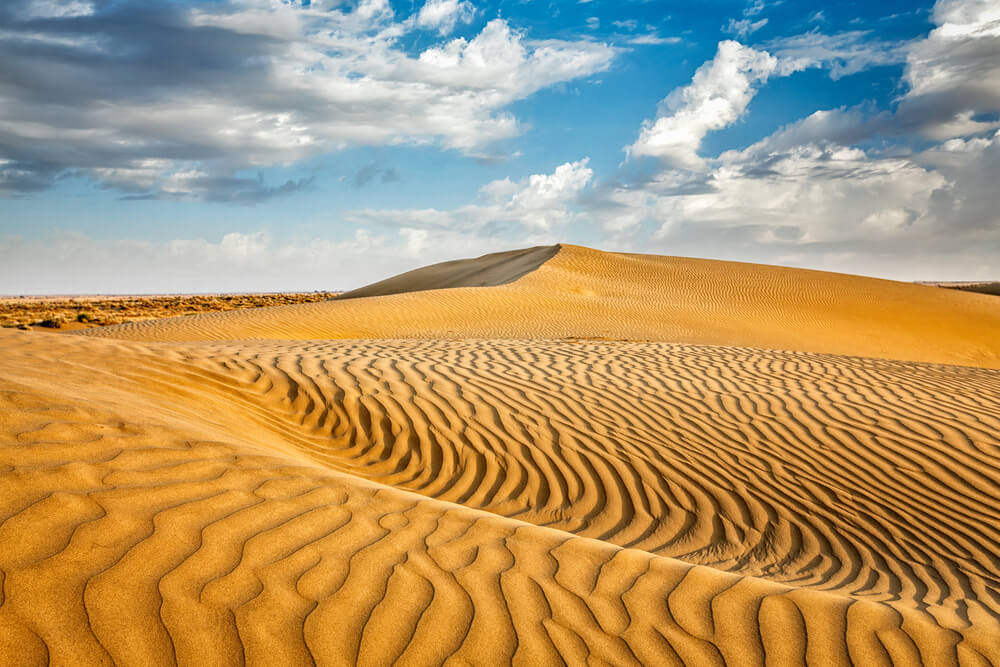
The desert has a lot of attractions, such as vast stretches of sand, many camping sites, and stargazing opportunities. The small sandy dune, the beautiful flora and fauna, and many saltwater lakes within the desert are also great tourist attractions. The Thar desert is also home to many endangered species in the region, which are protected in small restricted areas of the desert such as:
The Nara Wildlife sanctuary is 2400 square miles in area and is situated in the district of Mirpur Khas. It has the largest population of mugger crocodiles that are endangered in Pakistan.
The wildlife sanctuary of Rann of Kutch in the district is another critical protected area for 112 bird species, 22 plant species, 20 reptiles, and 30 mammals.
The most notable species of the Thar desert are the Blackbuck, Chinkara, and Indian Wild Ass.
The Thar desert also has religious diversity because it contains people from different religious beliefs, such as Muslims and many Hindu populations. The residents of this dry area have adopted the primary occupations of livestock, agriculture, and mushroom farming.
Apart from the landscape and other attractions in the desert, it is also famous for its many recreational activities, such as regularly organized festivals. One of the most celebrated festivals organized in the Thar desert is during the winter, when people wear colorful clothes, sing, and dance. The celebrations also showcase folk performances, acrobats, and snake charmers.
Thal Desert
Thal desert is the third largest desert in Pakistan which is situated in Punjab province between the Sindh river and Jhelum near the Potohar plateau. It has an approximate area of 20000 square kilometers and extends with a width of 112 km and length of 305 km. The majority of the desert consists of sandy dunes. It covers the districts of Jhang, Muzaffargarh, Layyah, Mianwali, Khushab, and Bhakhar, the left bank of the Jhelum river. Because of the harsh and dry weather of the region, Vegetation of any type is impossible. If you visit the desert, you may be able to start a few trees, shrubs, and grass types that are drought-resistant. The residents of the desert survive in this desert which is so dry it gets the water from the Thal canal to be used for feeding the cattle, irrigation, and daily chores. June is considered the hottest month in the Thal desert, with temperatures as high as 44 degrees Celsius. The average rainfall in the desert recorded here is 277 mm.
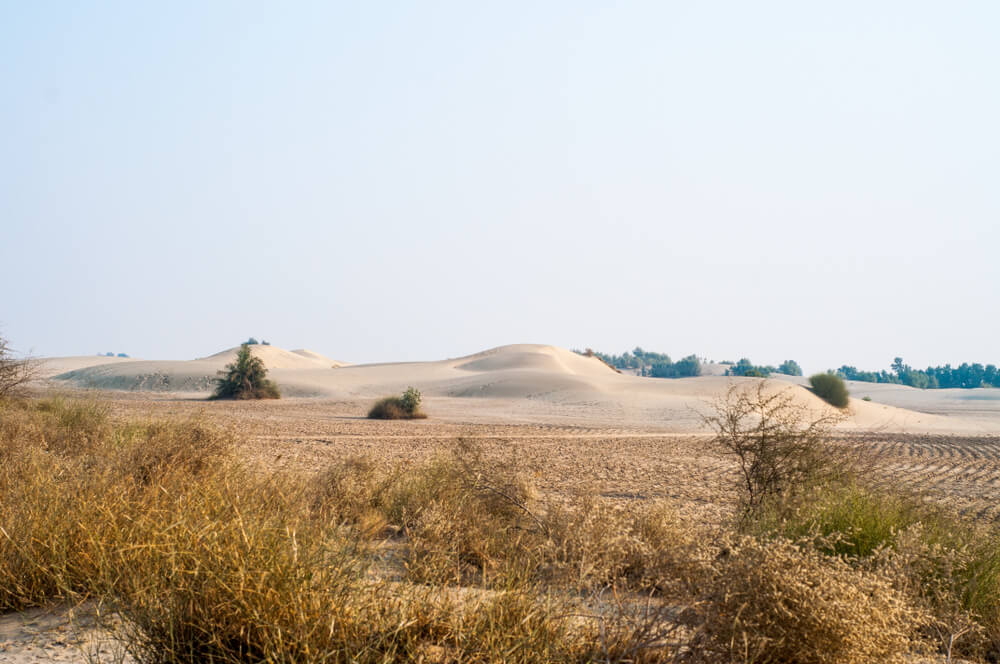
Visitors of the thal desert can witness the various languages spoken here, such as Saraiki, Urdu, and Thalochi.
The thal desert is a famous tourist attraction because of its unique terrain that consists of sandy dunes. During the milder months in the desert, people can enjoy camping, stargazing and the beauty of the landscape offered nowhere else in the world.
The desert consists of bridges of dunes and sand planes with narrow valleys of cultivable land. Compared to the upper Indus dunes, the dunes in Thal are poor in sedimentary and meta-sedimentary rock segments and quartz. However, they have high concentrations of heavy minerals and rock fragments of metavolcanic, volcanic, and feldspar.
The desert enjoys subtropical climatic conditions that are prone to extreme temperatures. About 50% of the desert sees an arid climate, while the remaining see a semi-arid environment. It is characterized by strong winds that blow through the desert all year, a severe erosion cause that leads to crop damage.
There are a lot of thorny and prickly shrubs and perennial herbs. The only trees in this desert are acacia, Beri, Shareen, and Khaggal. All the vegetation depends upon the rainfall in the area. Chickpea is the most successfully grown crop in the region’s arid environment. Some of the most notable natural wildlife include Indian desert cats, red fox skylarks, yellow wagtail quail, and warblers.
Cholistan Desert
Another desert of Pakistan is Cholistan, also called Rohi. It is located in the peripheries of Bahawalpur city of Pakistan. It has an area of 26000 square kilometers of barren land. It has a length of 192 km and a length of 480 km. It is mainly inhabited by semi-nomadic populations who constantly move from one place to other for shelter, food, and fodder for livestock.
The desert was once a very fertile region with a lot of water from the Himalayan range. However, it became a famous caravan trade route in the latter years, developing many forts here. With time and many unreasonable activities on this land, it led to the desertification of the area.
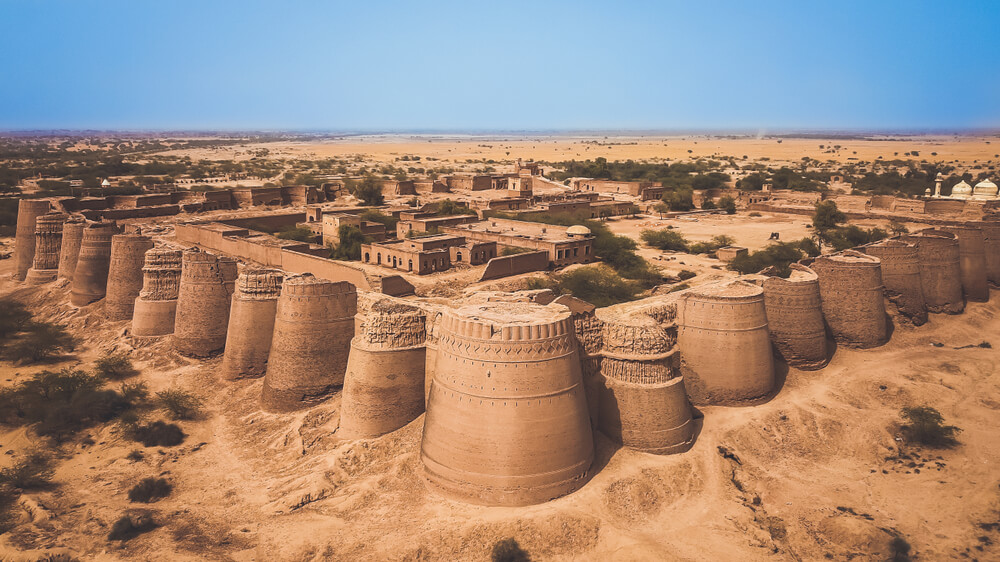
The desert is home to many unique species in Pakistan, such as Desert Wolf, red fox, Indian Mongoose, Forest Cat, Jackal, Black Vulture, Cobra, Russell’s Viper, Russell’s, and Saker Falcon. It also gives home to the Houbara Bustard, a migratory bird that visits the desert during winter. The bird is a famous highlight in Cholistan.
Another attraction is the Derawar fort in Cholistan. The fort is reminiscent of centuries-old history with perfect architecture that lies in symmetry. In contrast to its arid climate and conditions, the desert is home to one of the most well-protected rainforests in Pakistan, the Dodhla forest. With lush green vegetation, this is an oasis in the desert, one of its most unique features.
Katpana Desert
Katpana desert is one of Pakistan’s most famous deserts and has sandy locations. Also known as the cold desert of the country because of its location at a very high altitude. This desert contains renowned tourist points in Gilgit Baltistan Skardu. The cold desert is full of beauty, splendor, and surprises as the sandy dunes are covered in snow in the winter and summer, and fall gives greyish hues.
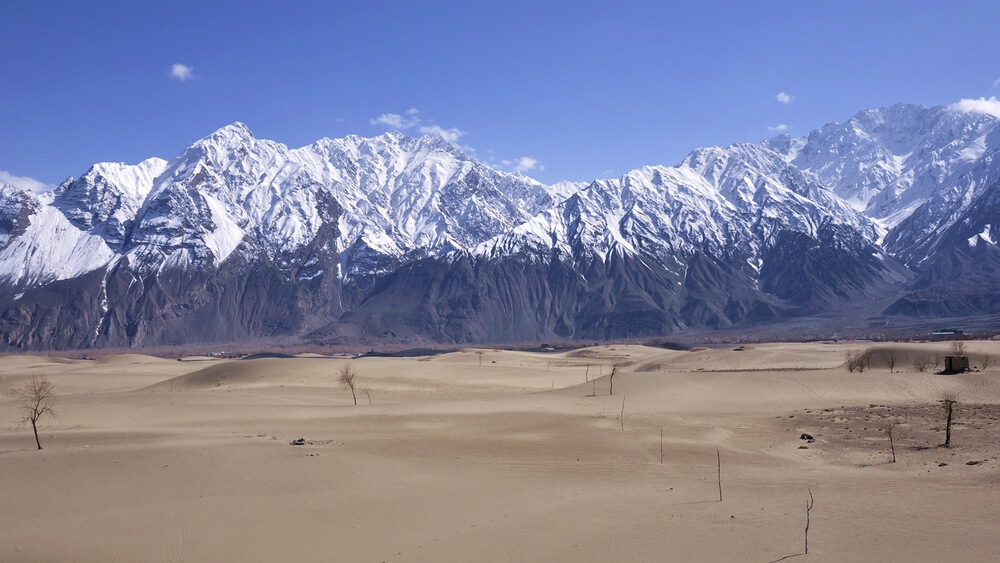
This one is 2226 meters above sea level, making it one of the highest in the world. In summer, the temperature can reach as high as 25 27 degree Celsius, but in winter, during December and January, it can live between -17 degree Celsius to minus 25 degree Celsius. By arriving at the Skardu airport, you can easily reach this desert between Shigar Valley and Skardu.
FAQs
Which is the hottest desert in Pakistan?
The Thar Desert is the hottest in Pakistan.
The weather is subtropical and desert. Seasonal variations in average temperature can produce extremes that vary from below-freezing in the winter to over 50 degrees Celsius in the summer. 100 to 500 mm of rainfall every year on average falls during the brief southwest monsoon from July to September.
A semidesert (in the east) with fewer dunes and a little more precipitation and an arid section (the Marusthali region in the west) exist in the desert.
How many deserts are there in Pakistan?
There are five Pakistan deserts.
Pakistan is home to five significant deserts that were once forested. These include the Thar Desert in Sindh, the Kharan Desert in Balochistan, the Katpana Desert in Skardu, the Thal Desert in the Bkhar district of Punjab, and the Cholistan Desert in Bahawalpur, Punjab.
Which is the largest desert in Pakistan?
The Thar Desert is also the largest in Pakistan. The 175,000 square kilometers of Thar Desert occupy a sizable portion of Pakistan and India. It is the third-largest desert in Asia and the sixteenth-largest desert in the world. India has also been affected by it. The Great Indian Desert sometimes referred to as the Thar Desert, is a sizable, arid area northwest of the Indian subcontinent that serves as a physical border between Pakistan and India. It is the 9th largest subtropical desert in the world and the 16th-largest desert overall. 15% of the Thar Desert is in Pakistan, and 85% is in India. It spans 320,000 km2 (120,000 sq mi) in India, 90% of which is in Rajasthan and includes Gujarat, Punjab, and Haryana. Starting in the eastern Tharparkar District, it expands over Punjab and Sindh in Pakistan. This desert is divided into two distinct areas: the Marusthali region in the west, which is extremely dry, and the eastern, semidesert area, which has fewer dunes and slightly more precipitation.
Which is the oldest desert in Pakistan?
Cholistan desert is the oldest desert in Pakistan.
How much area of Pakistan is desert?
Deserts cover 13.82% of Pakistan’s land.
Conclusion
The barren land of desert holds immense significance to our planet. They may seem covered with dust and sand, but the hidden treasure is buried under them. Using the reserves carefully is a duty of all human beings. But at the same time, it must be measured to control their area because desertification will drastically affect our climate.

